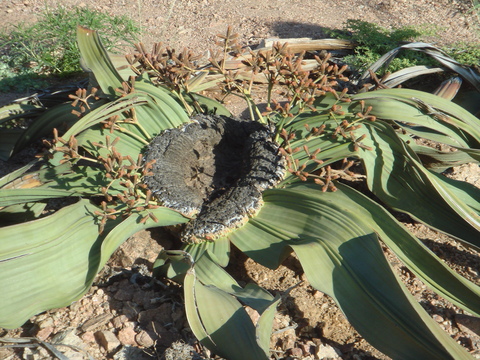Every 22nd of April, World Water Day is celebrated. This year I observe it from an unlikely place: The Namib Desert.
The Namib is the oldest desert of the world. We know that some deserts have been man-made, by human deforestation and overgrazing of goats and sheep. This desert, luckily, is not man-made. When West Gondwana split from the original one-lump ur-continent Gondwana about 140 million years ago, conditions arose for the arid coastal strip that we call the Namib Desert. Then and now, warm moist winds from the north are cooled down by a cold ocean stream, the Benguela upwelling. The mixture results in cold air that can’t rise up high enough to make rain clouds, just fog. So it rarely if ever rains here, which creates this desert, many hundred of miles long, from Namibia to Angola. Those cool ocean fogs maintain the nearly invisible desert fauna and spare flora.
History aside, the most prominent feature of the Namib Desert are the wandering dunes, spectacular formations in constant movement, propelled by the winds. I marvel at the sharp edges, undulating forms, surprising patterns one finds and the colors of yellow and red sand, sometimes dusted with crimson or black – the beauty of this desert is indescribable. The desert reaches right to the edge of the ocean. One would think there should be a thin stripe of green between them, but there is only the stark contrast of endless yellow sand and endless turquoise ocean.
Plants and animals eke out a living in the Namib Desert. Welwitschia mirabilis is such a plant, ancient and immutable, nurtured by the ocean fogs that roll in most days. Hundreds of years old at times, perhaps even thousands, Welwitschia has two long leaves (usually ripped into several strands by the constant desert winds) and a middle trunk that grows incredibly slow. We saw a colony of plants of male and female plants spreading on the desert floor – it takes hundreds of years before you’d call the middle a real trunk that visibly reaches some height from the ground.
How can a country like Namibia exist? Due to a sweet water reservoir beneath this scorched coastal stripe. Namibians are very aware how fragile this ecosystem is, and fierce regulations who is allowed to drill a well and where are in place. Namibian agriculture consists mostly grazing cows and sheep. A famous meat product is a jerky made from springbok, a wild antelope. Due to lack of water, Namibia has nearly no plant agriculture – most fruit and vegetables are imported from South Africa by which Namibia was annexed until 1990, when it freed itself during a bloody rebellion. By chance, their Independence Day happened to be yesterday – March 21st.
And by another chance we arrived last week during some of the worst rains and thunderstorms the Namibian remember. We ended the first leg of our trip at a washed out bridge and had to make a huge detour. And for all that unusual rain, the Namib Desert, in places, showed us a fine, fuzzy green – a beautiful welcome.
Loading…}
